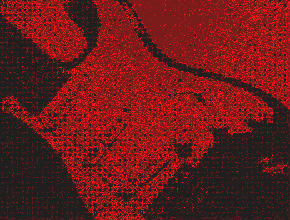I was recently invited by the music department of UC Riverside to give a distinguished lecture as part of their Florence Bayz lecture/concert series. The talk I gave, on December 6, 2023, drew on two chapters of my ongoing book project, titled Heaviness in Metal Music, which is currently under contract with Oxford University Press. I’m posting the abstract below for anyone who is interested in getting a preview of what I’m working on!
The parts of this talk that were about headbanging are an expanded version of one of my first conference papers, and I’ve got an article version of this chapter in the works that I hope to be able to announce soon.
“Headbanging and Heaviness in Metal Music, and their Origins in ‘White Blues’ (Mis)Understandings of Blackness”
Abstract
Metal’s roots in the blues are often invoked at the beginning of genre histories, but this invocation often seems to isolate Blackness in a separated past. I argue, however, that heavy metal’s initial and present conditions are shaped by White (mis)understandings of Blackness, with continuing legacies including two central aesthetic practices, heaviness and headbanging.
Existing research shows that Blues scenes in Britain were originally driven by racial authenticity based in artists’ knowledge of and ability to imitate Black American bluesmen. During the 1960s this racial authenticity was replaced with progressionist authenticity, a new rhetoric dictating that British musicians must depart from (Black) tradition to create their own authentic (White) style. This “White Blues” was renamed “Heavy Metal” circa 1975. Subsequently, the metal genre can be described as an aspirational trajectory towards extremity—“loudestness” (Duncan 1984) and heaviness—apparently disconnected from race. In other words, metal’s aesthetic of heaviness evolved from Blues ideologies about Blackness, but with the racial signifiers disconnected from their prior referents.
Like the aesthetic of heaviness, metal’s dance practices also evolved from White Blues understandings of Blackness. There is no evidence that earlier Black American musicians engaged in headbanging, moshing, or throwing the devil horns in the air. However, metal’s dance practices share many values and dynamics observed by scholars of Black American dance (such as Malone 1996): metal audiences participate in the performance, vocally and visibly appreciating the music; metal fans “dance the song,” embodying and expressing the song’s rhythms and changes in energy; headbanging preserves the motional logic of the backbeat pattern from Black American musics (Hudson 2022); and metal dancing involves the entire body with ecstatic intensity, deviating from Anglo-American norms of dispassion and upright comportment.
“Leaving the blues behind” is a master narrative in the history of heavy metal, but as the Black American guitarist Mike Coffey says, “you can’t take the blues out of it.” I conclude by exploring a few moments in which fans and musicians have stepped off the “teleological treadmill” of extremity, adopted healthier less-partisan and less-macho relationships with heaviness, and reconnected metal with its racial past.
